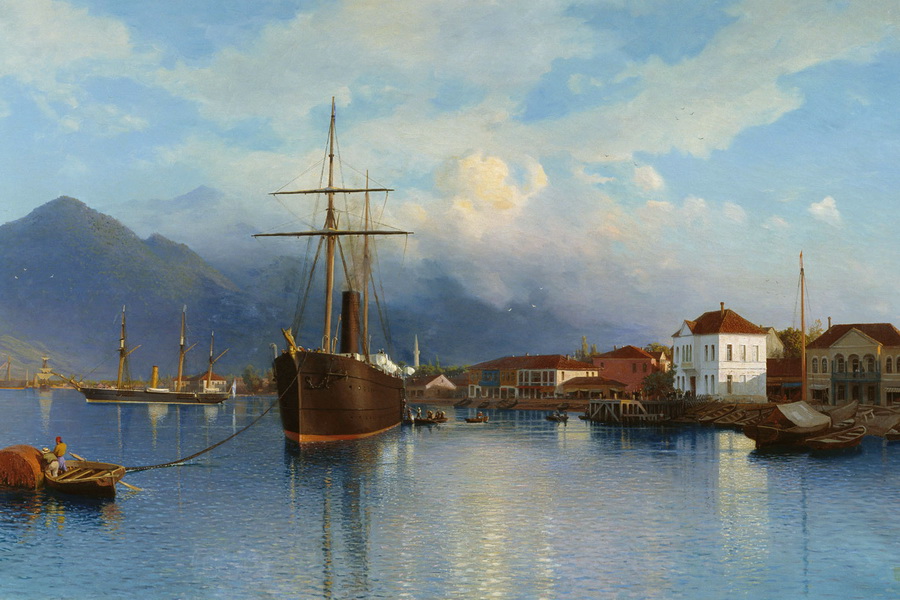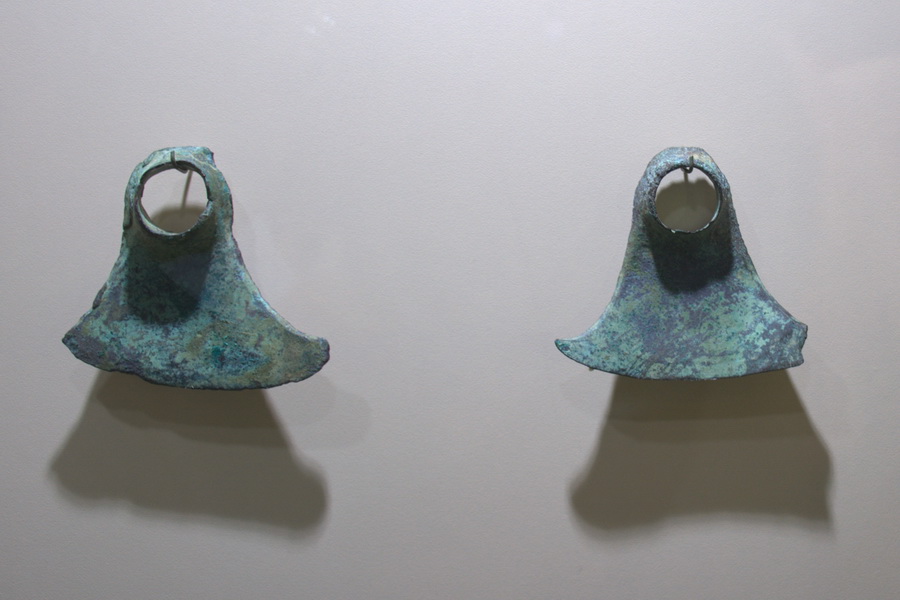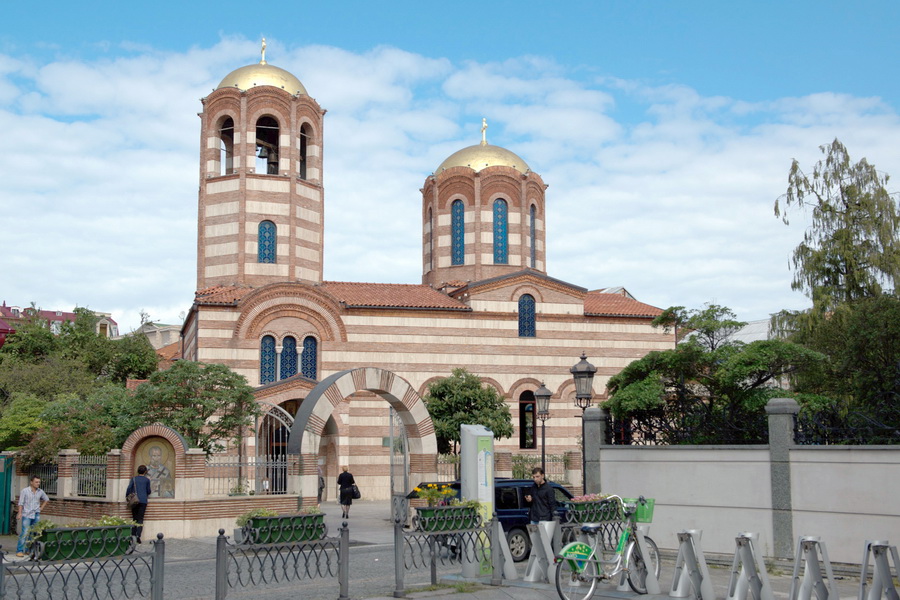
Today, Batumi looks like a modern resort town, but its history spans almost three thousand years, connected with ancient Greece, the Roman Empire, the Ottoman Empire, Russia, and even Britain. Over the centuries, Batumi has been a vital port on the Black Sea, coveted for its strategic importance. You can learn about Batumi's rich history in several city museums, including the Batumi Archaeological Museum, the Ajara State Museum, and the Nobel Brothers Museum, each offering insights into different periods of the Georgian port's past.
The first known settlement in the Batumi area appeared in the 8th-7th centuries BC. It was located 3 kilometers northeast of the present city, on the bank of the Korolistskali River. Archaeologists have found traces of this settlement and various artifacts that reveal the influence of ancient Greece on the region. The name Batumi is derived from the ancient Greek "bathus limen", meaning "deep harbor".
In the 2nd century AD, a temporary Roman fort was built near the settlement, and even earlier, another Roman fortress, Gonio, was constructed 10 km south of Batumi. In the 6th century, the Byzantine Empire, which succeeded the Roman Empire, built the fortress of Petra, located 15 km north of Batumi. After its construction, Petra was briefly captured by the Persians before returning to Byzantine control. The Byzantines eventually destroyed the fortress to prevent it from falling into enemy hands.

During this time, Batumi shifted to its present location and became a small port city. Following the Byzantine-Persian war, Batumi disappeared from historical records for nearly a thousand years, leading a quiet life as a link between central Georgia and the Black Sea states. During these times, the city was known by various names, including Vati, Vachi, and Bendian.
In the 15th century, the future Ottoman Empire began to rise, while Georgia faced internal disintegration, partly influenced by the Ottomans. In 1453, the Turkish sultan captured Constantinople (future Istanbul), and Georgia found itself surrounded by Muslim countries. A few years later, Batumi endured an unsuccessful siege but held out.
In 1545, the Battle of Sokhoista took place between the Ottomans and Georgians, resulting in a crushing defeat for the Georgian princes and Batumi falling under Ottoman rule. Georgian rulers managed to reclaim the city briefly in 1564 and 1606, but due to a sea blockade, they could not maintain control and had to retreat. Thus, Batumi remained under Turkish rule for 300 years, during which time the city underwent significant Islamization and was renamed Batum.

By the early 19th century, Batumi was one of many Ottoman ports on the Black Sea, with a population of about 2,000. Historical records mention the port as a hub for delivering slaves from the Caucasus to Constantinople.
During the Russo-Turkish War of 1828-1829, Russian General Osten-Saken attempted to capture Batumi but was unsuccessful. The Turks fortified their positions, deprived local Georgians of power, and made Batumi the administrative center of the region, building a new fortress. The population grew to 5,000, trade flourished, and consulates of Russia, Persia, and Italy were established. These developments attracted even more attention from the Russian Empire, which sought to take control of Batumi.
In the last Russo-Turkish War of 1877-1878, the Ottoman Empire further fortified Batumi, and Russian attempts to capture the port repeatedly failed. It was only after the complete defeat of the Ottoman Empire that Batumi and surrounding territories were handed over to the Russians, as stipulated in the Treaty of San Stefano. On August 25, 1878, the Russian army entered Batumi, and the Turks handed over the city's symbolic keys. Under the peace treaty, Batumi was designated as a "porto franco", a free port without duties.
Thanks to free trade and Russian investments, Batumi began to flourish. In 1880, Russian botanist and geographer A. Krasnov founded the famous Batumi Botanical Garden. In 1883, the Baku-Tiflis-Batumi railway reached the city, facilitating the transport of oil from Azerbaijan to the Black Sea. In 1888, Batumi officially gained city status, and churches and educational institutions were established. By the early 20th century, the population had grown to 16,000, with 1,000 working in the oil refining industry. The city hosted 16 consulates from various European countries, as well as the USA and Japan.

The First World War barely touched Batumi, but after the Russian Empire collapsed at the war's end, the city and Georgia as a whole became a battleground for power among various state entities. The Ottoman Empire tried to regain control of the region it had lost half a century earlier. Following the October Revolution of 1917 in Russia, the Ottoman Empire invaded Georgia. In March 1918, a peace treaty handed Batumi over to the Turks. However, the Transcaucasian Democratic Federal Republic briefly got involved before World War I ended, leading to the Batumi district coming under British control in 1919. Local Georgians demanded reunification with the rest of Georgia, a move supported by Russia. But in February 1920, the Red Army invaded Georgia and annexed it to the USSR. Between 1917 and 1921, Batumi experienced four changes of power.
On July 16, 1921, Batumi became the capital of the Autonomous Republic of Adjaristan, part of the Georgian SSR. It remained in this status until the collapse of the USSR in 1991. Throughout the 20th century, Batumi grew into a popular resort town in the south of the Soviet Union, with recreation areas, children's summer camps, and other infrastructure built in the city and on the surrounding beaches.
After Georgia gained independence in 1991, Adjara retained its status as an autonomous region and became a semi-independent republic within the country. From 1991 until 2004, the region was ruled by Aslan Abashidze, who maintained friendly relations with Russia. A Russian military base was located in Batumi until 2007.
Since the early 21st century, international investors have poured into Batumi, transforming it into a modern resort. New hotels have been built, and new parks, squares, and monuments have been opened. In 2010, the most famous monument, "Ali and Nino", was unveiled and has since become Batumi's iconic landmark. Today, Batumi continues to grow, with new hotel complexes and a high-speed highway under construction to shorten travel time to Tbilisi.

